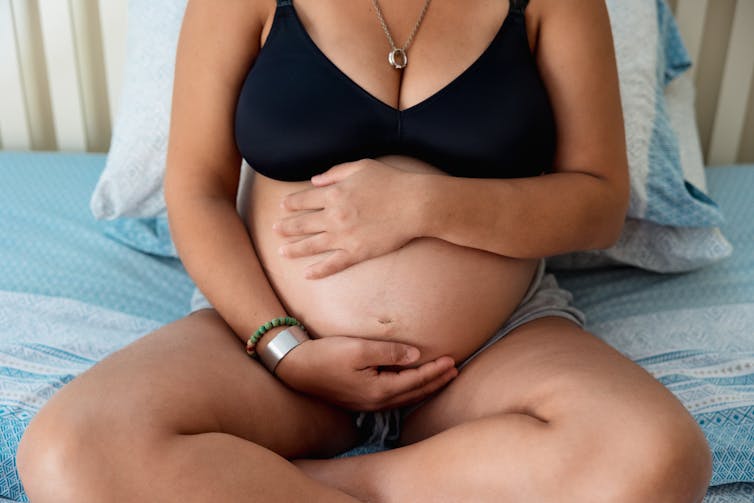Fetal autopsies could help prevent stillbirths, but too often they are used to blame mothers for pregnancy loss
- Fetal autopsies could help prevent stillbirths by identifying underlying causes, but they are rarely performed after stillbirths, occurring in only 1 in 5 cases.
- In the US, at least 1 in 4 stillbirths (and up to 50% of those at term) are preventable, yet there has been little movement towards prevention, with the US ranking 185th out of 195 countries in reductions to stillbirth rates from 2000-2019.
- There is a disproportionate number of arrests after pregnancy loss, particularly among marginalized communities, and fetal autopsies are often used as evidence to conclude that the pregnant person caused their pregnancy loss. However, these conclusions may not be supported by qualified pathologists.
- The rarity of fetal autopsies is influenced by cost (out-of-pocket costs range from $1,500 to $5,000) and a lack of knowledge among doctors about the benefits and process of fetal autopsy. Additionally, there are not enough qualified pathologists with expertise in stillbirth evaluation in the US.
- The misuse of fetal autopsies as criminal evidence can perpetuate a cycle of blame and suspicion, rather than seeking to understand and prevent stillbirths. Gathering data on the causes of stillbirth through fetal autopsies is essential for reducing the US’s stillbirth rate and promoting maternal health and well-being.

About 60 pregnancies per day in the U.S. end in stillbirth.
The best way to find out why a stillbirth occurred is a fetal autopsy – yet these procedures are performed in only 1 in 5 of the over 20,000 stillbirths that occur each year. As I explain in my recent book, “Stillbirth and the Law,” the fact that so few fetal autopsies are performed after stillbirths is actually a driver of the disproprotionately high number of stillbirths in the U.S.
One major exception to the rarity of fetal autopsies is when pregnancy loss ends with criminal arrest. Arrests after pregnancy loss are not new, but according to data compiled by the nonprofit group Pregnancy Justice, they have increased since the Supreme Court overturned the federal constitutional right to abortion in 2022.
As a legal scholar who studies pregnancy loss and its potential legal implications, I’m struck by this disparity: Autopsies are rare when the goal is general medical insight about the causes of stillbirth and pregnancy loss more generally, but they are seemingly routine when criminal consequences are possible.
Stillbirth and the inevitability myth
In the U.S., pregnancy loss before 20 weeks is called miscarriage, and pregnancy loss after 20 weeks is called stillbirth. Miscarriage is much more common, with some studies estimating it occurs in as many as 1 in 4 pregnancies. Stillbirth is rarer, but the incidence is still surprisingly high. Currently, about 1 in 170 births in the U.S. is a stillbirth, a rate higher than in many other high-income countries.
Moreover, that number masks a dramatic racial disparity. Black women in the U.S. face double the risk of stillbirth compared with white women.

Maskot via Getty Images
Doctors – and, consequently, their patients – widely assume that pregnancy losses are inevitable. That’s relatively accurate for miscarriages, especially those before 12 weeks, which researchers believe are usually caused by chromosomal abnormalities. But it’s not accurate for stillbirths: Research shows that abnormalities account for fewer than 8% of stillbirths after 28 weeks.
In the U.S., at least 1 in 4 stillbirths are preventable – and that rate is closer to 50% for stillbirths at term, meaning after 37 weeks of pregnancy. Yet there’s been little movement toward prevention. According to a 2020 UNICEF report, the U.S. ranks 185th out of 195 countries in reductions to stillbirth rates from 2000-2019.
The U.S. outpaces other high-income countries in maternal mortality – rates that continue to rise dramatically – and in infant and child mortality. It’s also worth noting that the number of stillborn babies every year in the U.S. consistently exceeds the number of infant deaths from all causes.
The rarity of fetal autopsies
There is no one solution to reducing the U.S.’s stillbirth rate, but gathering data about its causes is a necessary step. A fetal autopsy is widely considered the gold standard for determining the cause of death after stillbirth. The autopsy procedure is extensive, with X-rays, external evaluations of the baby and examinations of internal organs and tissue sampling.
Not only are fetal autopsies extremely rare, but the data from fetal autopsies that do occur is likely not representative. Women with higher levels of education are more likely to get a fetal autopsy after stillbirth. Women with lesser income, however, have double the risk of stillbirth.
One barrier is cost. Many hospitals will not cover the costs of a fetal autopsy. Medicaid does not cover the exam either, and neither do many private insurance companies. Out-of-pocket costs range from $1,500 to $5,000. Stillbirth is surprisingly expensive, and many families understandably choose to use their funds to cover other costs.

MANUEL PUGA/iStock via Getty Images Plus
The way that doctors bring up the subject of fetal autopsy can also influence whether parents decide on one. Research suggests that parents often do not receive compassionate counseling on this issue. Some parents reported feeling that providers actively discourage them from having one. Providers often lack knowledge about the benefits of fetal autopsy and of the process itself. Doctors’ reactions to stillbirth as a rare, freak event dissuades parents from exploring the cause of their child’s stillbirth and conveys that nothing would be gained from a fetal autopsy.
Finally, there simply aren’t enough qualified pathologists who have expertise in stillbirth evaluation in the U.S. Fetal autopsies are complex. Performing them requires synthesizing knowledge about birth defects, genetic syndromes, maternal effects, fetal development and more. Pathologists must evaluate the placenta and the umbilical cord and factor in maternal health. According to a 2019 report, only 268 out of more than 21,000 pathologists in the U.S. had specialized training in pediatric pathology. And even those pathologists are not guaranteed to have expertise in evaluating fetal or neonatal deaths.
Fetal autopsies’ misuse as criminal evidence
In my view, the rarity of fetal autopsies feeds a sort of vicious cycle. If the cause of a stillbirth is unknown, it opens the doors to suspicion that the pregnant person caused their pregnancy loss.
Overwhelmingly, the women who have been arrested after their pregnancy loss have been from marginalized communities, suggesting that bias also plays a strong role in these arrests. And in these cases, fetal autopsies are common. For instance, authorities conducted one on the fetus of Selena Chandler-Scott in April 2025, when she was arrested after having a miscarriage at 19 weeks. A pathologist concluded from the autopsy that Chandler-Scott did not cause the miscarriage.
More often though, autopsies in such cases are used to conclude that the pregnant person was at fault. There’s every reason, however, to question those conclusions. Fetal autopsies help identify underlying causes of pregnancy loss only when performed by pathologists specifically qualified to perform them. And in many high-profile criminal cases, it’s clear that pathologists lacked the required expertise to assess fetal deaths.
Consider, for example, Rennie Gibbs, who experienced a stillbirth in Mississippi when she was 16. Her baby girl was born with the umbilical cord wrapped around her neck, yet the de facto state medical examiner at the time – who was not a certified pathologist and therefore clearly lacked the needed specialization – concluded she had died due to Gibbs’ cocaine use. Chelsea Becker of California had at least three infections that increase the risk of stillbirth, yet the pathologist, who also lacked the needed specialization, concluded the baby died due to Becker’s methamphetamine use – and later admitted he had never even looked at her medical history.
But it’s hard to rebut these conclusions without building a foundation of research on why stillbirths are happening. Fetal autopsies performed by qualified pathologists to systematically assess the causes of death are a key component of that research – which, I believe, will both help prevent stillbirths and decrease the inclination to blame people who experience pregnancy loss.
![]()
Jill Lens is on the Board of Directors of PUSH for Empowered Pregnancy, a nonprofit group.
